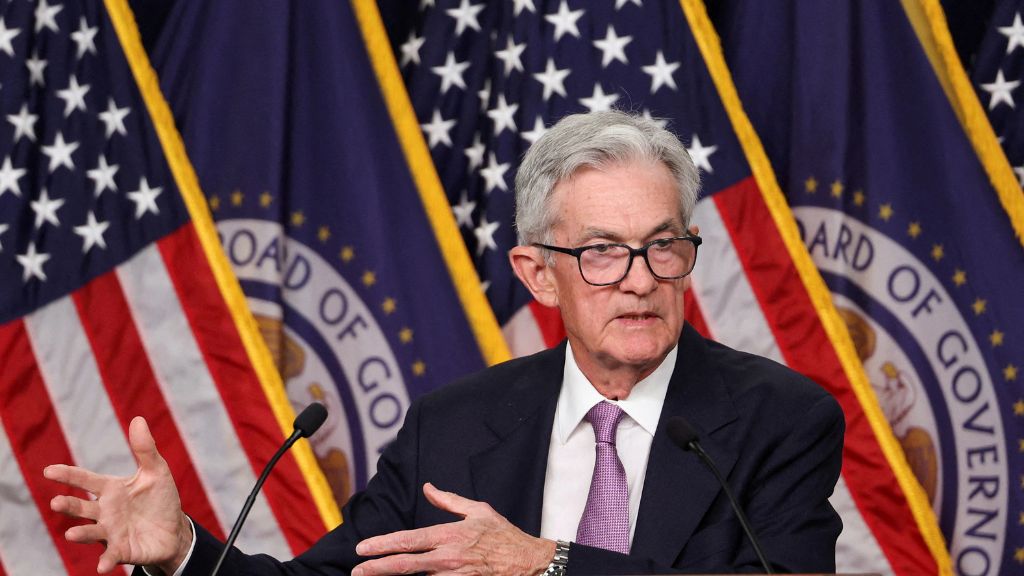Hey there, money mavens! If you’ve ever wondered what’s going on inside the minds of the Federal Reserve bigwigs, you’re in for a treat. On Wednesday, March 19, 2025, the Fed is dropping its first batch of economic projections for the year, alongside their latest call on interest rates.
These forecasts are like a crystal ball into the future of borrowing costs, inflation, and the economy—and trust me, they’re a big deal right now.
With President Trump shaking things up with his trade war talk and bold policy promises, everyone’s dying to know: will the Fed cut rates again in 2025, or are we stuck in a holding pattern? Let’s break it all down in a way that’s fun, friendly, and totally pro-level—no finance degree required!
Why the Fed’s Projections Are the Talk of the Town
Picture this: the Federal Reserve is like the puppet master of the U.S. economy, pulling strings with interest rates to keep things humming along. After slashing rates by a full percentage point in late 2024, they hit the pause button in January 2025. And guess what? Most folks expect them to keep their hands off the controls again this Wednesday.
Why? Well, there’s a lot of uncertainty swirling around. Trump’s plans—think global trade battles, government spending cuts, and immigration crackdowns—could throw the economy into a wild spin. Will prices skyrocket? Will growth stall? The Fed’s waiting for the dust to settle before making its next move.
Back in December, Fed officials predicted two rate cuts for 2025, trimming borrowing costs by half a percent. But with Trump’s policies possibly fueling hotter inflation and slower growth, some experts think the Fed might dial back those plans. So, how do you make sense of it all? Let’s dive into the Fed’s playbook and learn how to read their projections like a seasoned insider!
The Star of the Show: Meet the Dot Plot
When the Fed releases its Summary of Economic Projections every few months, all eyes zoom in on one thing: the dot plot. Don’t worry—it’s not as complicated as it sounds! This little chart is your VIP pass to the Fed’s interest rate crystal ball, showing where they think rates will land through 2027 and beyond.
Here’s how it works: imagine a graph with a vertical scale of interest rate percentages. For each of the Fed’s 19 officials, there’s a dot showing their personal guess for where rates will be at key points—like the end of 2025, 2026, or even years down the road. It’s like a secret vote, but with no names attached (sorry, no “Bob thinks 4%” labels here!).
The real magic happens when you look at the median dot—the one smack in the middle of all 19 guesses. That’s the number everyone quotes as the Fed’s “official” outlook. If the median dot for 2025 drops from, say, 4.25% to 4%, it’s a clue they’re planning a quarter-point cut. Simple, right? But oh-so-powerful!
What’s the Fed Trying to Do, Anyway?
Before we get too deep into the dots, let’s talk about why the Fed messes with interest rates in the first place. They’ve got two big goals: keeping inflation low and steady (think 2% as their happy place) and making sure the job market stays strong. It’s like juggling flaming torches while riding a unicycle—tricky, but they’ve got skills!
When inflation starts creeping up—like it did in 2022—the Fed cranks up interest rates. Higher rates make borrowing pricier, which cools off spending on big stuff like houses and cars. That slows the economy, eases demand, and stops companies from jacking up prices like it’s a free-for-all. Between March 2022 and July 2023, they hiked rates hard, and it worked—inflation finally started chilling out.
By September 2024, with prices more under control, the Fed flipped the script and started cutting rates. They kicked things off with a bold half-point slash, followed by two more cuts, landing us at the current range of 4.25% to 4.5%. Fed Chair Jerome Powell called it a proactive move to keep the economy strong—not a panic button for a crash. But now, with Trump’s wild card policies in play, will they keep cutting in 2025? That’s where the dot plot comes in clutch.
What to Watch For in the 2025 Dot Plot

So, what’s the buzz for Wednesday’s update? Back in December, the median dot suggested two quarter-point cuts in 2025—bringing rates down to around 3.75% or 4%. But things have changed since then. Economists are betting Trump’s trade tariffs and spending cuts could stoke inflation while slowing growth—a messy combo that might make the Fed rethink its game plan.
Here’s what to keep an eye on:
Fewer Cuts on the Horizon?
- If the median dot for 2025 climbs higher—say, to 4.25% instead of 3.75%—it could mean the Fed’s scaling back to just one cut (or none at all). That’d signal they’re worried about inflation heating up again.
- On the flip side, if the dots stick to two cuts or even add a third, it’s a sign they’re confident the economy can handle a little loosening.
The Spread of the Dots
- Don’t just stare at the median—check how spread out those 19 dots are! A tight cluster means the Fed’s on the same page. A wild scatter? They’re all over the place, and uncertainty’s ruling the day.
Long-Term Vibes
- The dot plot also shows where rates might settle “over the longer run.” This is the Fed’s guess at the “neutral” rate—more on that in a sec. If that number ticks up, it’s a hint they think the economy can handle higher rates without breaking a sweat.
The Neutral Rate: Is 4.5% Still “Restrictive”?
Okay, let’s talk about this “neutral” rate thing—it’s a biggie! The neutral rate (sometimes called the “natural” rate) is like the Goldilocks zone for interest rates: not too high to choke the economy, not too low to overheat it. It’s where the Fed thinks rates can sit without pushing or pulling growth.
In December 2024, the Fed pegged this neutral rate at 3%, up from earlier estimates. Compare that to today’s 4.25% to 4.5%, and you’ll see why Powell’s been calling current rates “meaningfully restrictive.” Translation: they’re still high enough to slow things down and keep inflation in check.
But here’s the million-dollar question: will that still hold true on Wednesday? If Trump’s policies juice inflation, the Fed might decide 4.5% isn’t as restrictive as they thought. Watch Powell’s press conference after the projections drop—if he hints that rates feel less heavy, it could mean fewer cuts ahead. On the flip side, if he doubles down on “restrictive,” they might still have room to ease up later.
How Trump’s Wild Card Could Shake Things Up
Let’s not sugarcoat it: President Trump’s agenda is a curveball the Fed can’t ignore. His talk of tariffs could drive up prices for everything from electronics to groceries—hello, inflation! Meanwhile, slashing government spending and deporting workers could hit growth hard, especially in industries like construction or agriculture. It’s a classic “stagflation” vibe—rising prices with a sluggish economy—and it’s a nightmare for the Fed.
Back in December, the Fed didn’t have to wrestle with this mess. Now? They’re staring down a 2025 where inflation might not play nice. If the dot plot shows fewer cuts—or even a rate hike sneaking in—it’s a sign they’re bracing for a bumpy ride. Economists are split: some see one cut, some see two, and a few wildcards think rates might hold steady all year. Wednesday’s projections will give us the first real clue.
Pro Tips for Reading the Fed Like a Boss
Ready to flex your Fed-reading muscles? Here’s your cheat sheet:
- Zoom In on the Median Dot: It’s the headline number for 2025. Up, down, or steady—it’s your first hint at what’s coming.
- Check the Neutral Rate: If it’s creeping closer to 4.5%, the Fed might not see today’s rates as a big deal anymore.
- Watch Powell’s Words: The dot plot’s just half the story. Tune into his press conference for the vibe check—is he chill or stressed?
- Look Beyond 2025: The 2026 and long-run dots tell you where the Fed thinks the economy’s headed years from now.
Why This Matters to You
You might be thinking, “Cool, but how does this affect me?” Fair question! Interest rates touch everything—your car loan, your mortgage, even your credit card bill. If the Fed cuts less than expected, borrowing stays pricey, and that dream home might cost more. If they ease up, you could snag cheaper loans and breathe easier. Plus, businesses watch this stuff too—fewer cuts could mean slower hiring or tighter budgets.
Read Also: Coen Carr Shines Bright: How Michigan State’s Rising Star Sparked a Big Ten Tourney Win Over Oregon!
The Bottom Line: A Fed Worth Watching
Wednesday’s projections are more than just numbers—they’re a window into how the Fed’s navigating a wild 2025. Will they stick to their December plan, or will Trump’s curveball force a rewrite? Whether you’re a finance geek or just someone who likes a good economic plot twist, this is one update you won’t want to miss.
So, grab your popcorn (or coffee—it’s Wednesday, after all) and get ready to decode the dot plot like a pro. What’s your prediction—more cuts, fewer cuts, or a total standstill? Drop your thoughts below, and let’s see who nails it! The Fed’s about to spill the tea, and we’re here for every sip.

